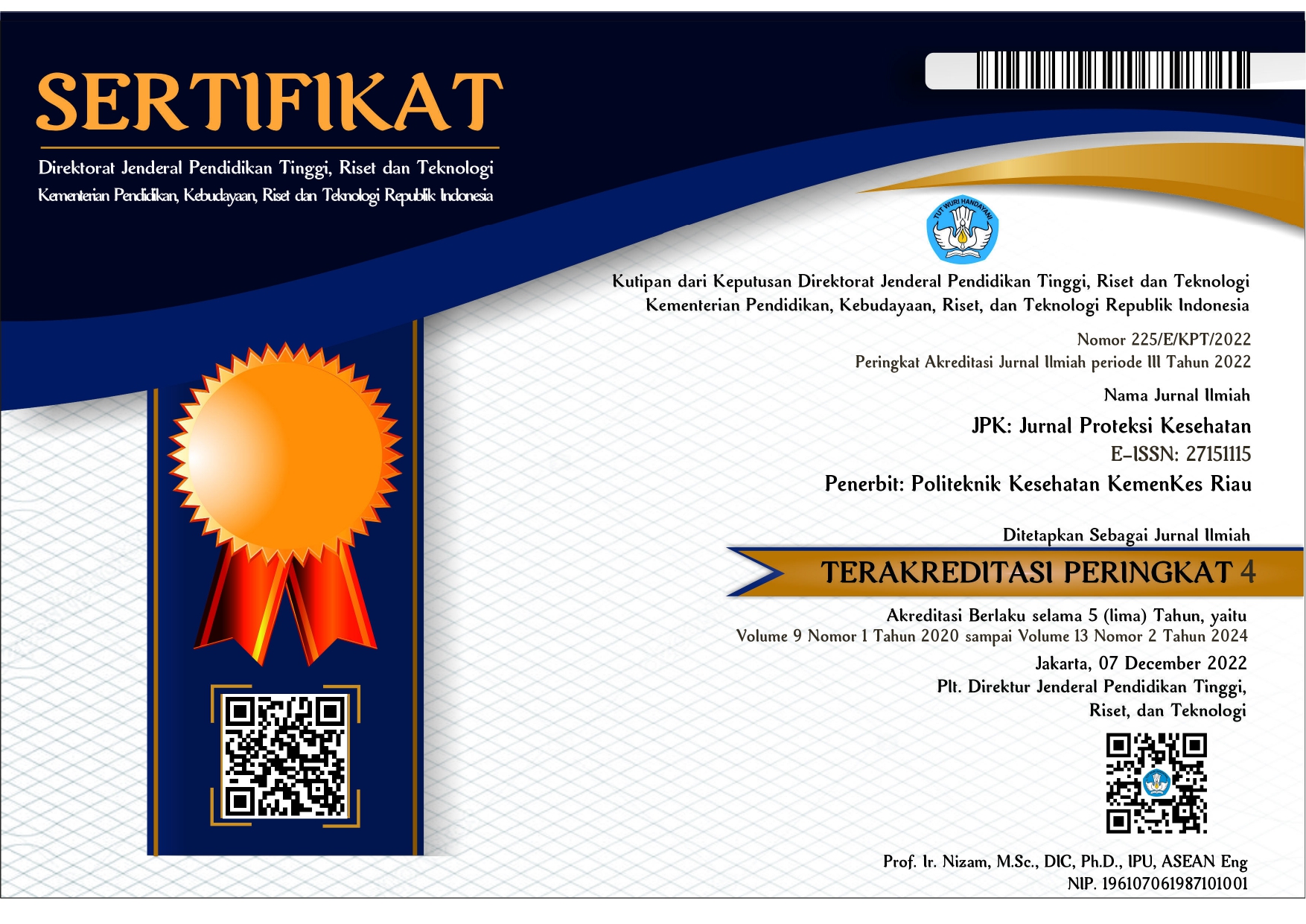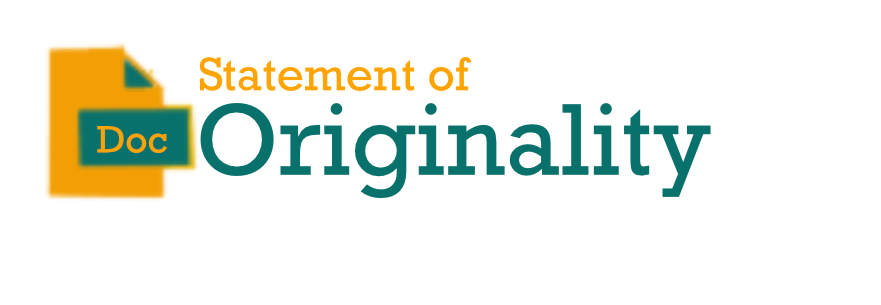Analysis of Coliform and Colifecal Contamination on Sanjai Chip Using MPN Method
Abstract
Sanjai chip is a type of traditional food made of cassava processing and it is typical food of West Sumatera. Sanjai chips sold at Pasar Bawah in Pekanbaru City sold in an open state and the location is close to the trash heap, so it is feared to be contaminated by bacteria. The purpose of this research was to find out if there was or there was no contamination of coliform and colifecal bacteria on Sanjai chips. This bacteria contamination was analyzed on seven sanjai chip from different sellers using Most Probable Number (MPN) method with type 5-1-1. The result on seven samples obtained shows that all the samples did not contain coliform marked with there was no formation of gas bubble in the durham tube in the preliminary test. Therefore, affirmation test in this research was not continued. Thereby, Sanjai chips sold at Pasar Bawah Pekanbaru City fulfilled the requirement according to Indonesian National Standard (SNI) Number 7388-2009 about maximum limit of microba contamination in food, where the bacteria number allowed is <3/gram, so it is safe for consumption.
References
[2] Standar Nasional Indonesia, “Batas Maksimum Cemaran Mikroba Pangan SNI 7388 : 2009”, Jakarta: Badan Standarisasi Nasional, 2009
[3] Radji, M., “Buku Ajar Mikrobiologi”, Jakarta: Buku Kedokteran EGC, 2009
[4] Karsniah, L. dan H. M., Suharto, “Bakteri Gram Negatif”, Jakarta: Binarupa Aksara, 2012
[5] Harti, A. S., Mirobiologi Kesehatan, Yogyakarta: CV Andi Offest, 2015
[6] Pratiwi, S., “Mikrobiologi Farmasi”, Yogyakarta: Erlangga, 2009
[7] Novel, S., S. Wulandari, A.P dan Safitri, R., “Praktikum Mikrobiologi Dasar”, Jakarta: CV Trans Info Media, 2010
[8] BPOM RI., “Pengujian Mikrobiologi Pangan”, Pusat Pengujian Obat dan Makanan Badan Pengawas Obat dan Makanan Republik Indonesia, 2008
[9] Pratiwi, R., “Distribusi Bakteri Coliform di SITU Cilodong Depok Jawa Barat, Universitas Indraprasta PGRI”, Exacta, 6(2), 2013
[10] Jawetz, M. dan Adelberg, “Mikrobiologi Kedokteran”, Jakarta: Grand Wijaya Center, 2005
[11] Aulya, W., Fadhliani, Vivi M., “Analysis of Coliform and Colifecal Total Pollution Test on Various Types of Drinking Water Using the MPN (Most Probable Number) Method”, Serambi Journal of Agricultural Technology (SJAT), 2(2), 2020
[12] Alwi, M dan Sri M., “Pengujian Bakteri Coliform dan Escherichia Coli Pada Beberapa Depot Air Minum Isi Ulang di Kecamatan Palu Timur Kota Palu”, Biocelebes, 6(1), 2012
[13] Shania, M. C., Peni F., dan Wahyuni S., “Pemeriksaan Most Probable Number (MPN) Coliform dan Colifecal pada Air Minum Isi Ulang dari Depot Air Minum Isi Ulang di Kelurahan Delima Kota Pekanbaru”, Jurnal Analis Kesehatan Klinikal Sains, 8(2), 2020












